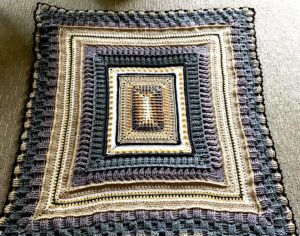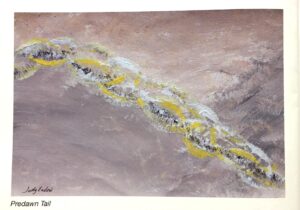This is the third part of a five-part blog series with this outline
Part One: Personal Background Information (Release Date: 3-16-22)
Part Two: Information Storage – Bridge Pieces (Release Date: 3-30-22)
Part Three: Information Processing – The Gaps (Release Date: 4-13-22)
Part Four: Information Retrieval – Canoe Transportation (Release Date: 4-27-22)
Part Five: Conclusion (Release Date: 5-11-22)
The Gaps: Information Processing
When the gaps are what she’s getting
after searching through her stone islands of information
she experiences a huge frustration,
but tries hard not to let anyone know it
by trying to insure that her behaviors won’t show it
so nobody will know that she’s coming up empty,
not able to supply whatever it is they are after,
whatever it is they want her to know
(and she probably does, but can’t tell what it is just then).
Most of the time she wants to join in
to take her place (or any place!) in the world,
but she’s “drawing a blank,”
as that expression goes,
because the gaps are so empty.
She doesn’t want empty. She’d rather be friendly.
She tries to join in. She may laugh or smile,
but in a short while
all the world-people are mad again.
And that is how it is most of the time
when she tries to take part and act like they want her to act.
She can for awhile, but then “draws a blank”
when the gaps come up
where there should be bridges.
Selection from Autistically Thriving: Reading Comprehension, Conversational Engagement, and Living a Self-Determined Life Based on Autistic Neurology, pg. 109.
The first photo is an afghan I crocheted to match an acrylic I painted some years earlier.
`
Note: The author is a mental health therapist and is also autistic. She intentionally uses identity-first language (rather than person-first language), and invites the reader, if interested, to do further research on the preference of most autistic adults to refer to themselves using identity-first language.
BOOKS BY JUDY ENDOW
Endow, J. (2021). Executive Function Assessment. McFarland, WI: Judy Endow.
Endow, J. (2019). Autistically Thriving: Reading Comprehension, Conversational Engagement, and Living a Self-Determined Life Based on Autistic Neurology. Lancaster, PA: Judy Endow.
Endow, J. (2012). Learning the Hidden Curriculum: The Odyssey of One Autistic Adult. Shawnee Mission, KS: AAPC Publishing.
Endow, J. (2006). Making Lemonade: Hints for Autism’s Helpers. Cambridge, WI: CBR Press.
Endow, J. (2013). Painted Words: Aspects of Autism Translated. Cambridge, WI: CBR Press.
Endow, J. (2009b). Paper Words: Discovering and Living With My Autism. Shawnee Mission, KS: AAPC Publishing.
Endow, J. (2009a). Outsmarting Explosive Behavior: A Visual System of Support and Intervention for Individuals With Autism Spectrum Disorders. Shawnee Mission, KS: AAPC Publishing.
Endow, J. (2010). Practical Solutions for Stabilizing Students With Classic Autism to Be Ready to Learn: Getting to Go. Shawnee Mission, KS: AAPC Publishing.
Myles, B. S., Endow, J., & Mayfield, M. (2013). The Hidden Curriculum of Getting and Keeping a Job: Navigating the Social Landscape of Employment. Shawnee Mission, KS: AAPC Publishing.

